Call Us
+86 136 6007 9809
Call Us
+86 136 6007 9809
Apr. 18, 2023
1. What are hub bolts/nuts?
Bolt: A mechanical part, a cylindrical threaded fastener with a nut. A type of fastener consisting of a head and a screw (a cylinder with external threads), which needs to be matched with a nut to fasten two parts with through holes. This connection form is called a bolt connection. If the nut is unscrewed from the bolt, the two parts can be separated so the connection is detachable. Nut: It is a nut, a part that is screwed together with a bolt or a screw for fastening. A component that must be used in all manufacturing machinery is divided into carbon steel, stainless steel, and non-ferrous metals (such as copper) according to different materials. Wait for several types.
2. The role of automobile bolts/nuts
Link the wheel hub to the body mounting plate so that it can be safely fixed during high-speed driving. Remarks: Bolts or nuts generally fix the original cars, and central locks fix a few sports cars.
3. Summary of standard models
Original car nut fixing brands include Lexus, Jaguar, Toyota, Infiniti, Land Rover, Cadillac, Nissan, Mazda, Buick, Ford, Geely, Harvard, JAC, Suzuki, Chery, Roewe, Hyundai, Chevrolet, etc., familiar in Japanese cars and a domestic car. The original car bolt fixing brands include BMW, Audi, Volkswagen, Mercedes-Benz, Citroen, Volvo, etc., which are common in German cars.
4. Types of bolts and nuts
Joint mating surfaces are taper (most such as Nissan, Mazda, BMW, etc.), flat (a few such as Lexus, Jaguar, etc.), spherical (such as Audi, Volkswagen, Mercedes-Benz, etc.)
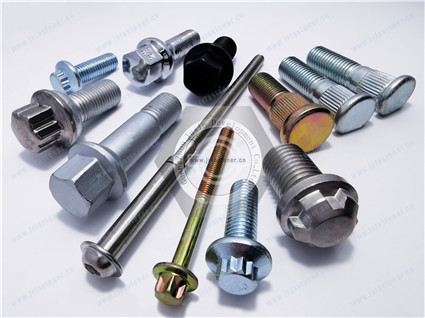 | 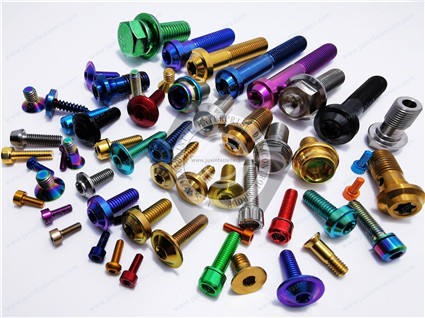 |
The characteristics and functions of hub screws
1. What are hub bolts/nuts?
Bolt: A mechanical part, a cylindrical threaded fastener with a nut. A type of fastener consisting of a head and a screw (a cylinder with external threads), which needs to be matched with a nut to fasten two parts with through holes. This connection form is called a bolt connection. The two parts can be separated if the nut is unscrewed from the bolt so the connection is detachable. Nut: It is a nut, a part that is screwed together with a bolt or a screw for fastening. A component that must be used in all manufacturing machinery is divided into carbon steel, stainless steel, and non-ferrous metals (such as copper) according to different materials. Wait for several types.
2. The role of automobile bolts/nuts
Link the wheel hub to the body mounting plate so that it can be safely fixed during high-speed driving. Remarks: Bolts or nuts generally fix the original cars, and central locks fix a few sports cars.
3. Summary of standard models
Original car nut fixing brands include Lexus, Jaguar, Toyota, Infiniti, Land Rover, Cadillac, Nissan, Mazda, Buick, Ford, Geely, Harvard, JAC, Suzuki, Chery, Roewe, Hyundai, Chevrolet, etc., familiar in Japanese cars and a domestic car. The original car bolt fixing brands include BMW, Audi, Volkswagen, Mercedes-Benz, Citroen, Volvo, etc., which are common in German cars.
4. Types of bolts and nuts
Joint mating surfaces are taper (most such as Nissan, Mazda, BMW, etc.), flat (a few such as Lexus, Jaguar, etc.), spherical (such as Audi, Volkswagen, Mercedes-Benz, etc.)
New Type of Fastening Connections for Aluminum Body
Aluminum has significantly contributed to lightweight and fuel economy and is increasingly used in automotive bodies. Many types of fasteners for aluminum applications can be divided into two categories based on the material, steel and aluminum, and into two categories based on the connection type: cold and hot connections. There are four types of riveting: compression, tension, lock, and flange riveting.
Compression Riveting: This is a standard form of connection that interlocks with the sheet metal through a legal or radial structure. There are two types of linking: serrated interlocking and flange interlocking. It can be widely used in stamping, extruding, and casting aluminum alloy body parts and is mainly divided into compression riveting nuts and bolts.
Tension Riveting: Tension riveting uses standard component heads to pull, deform, expand, and clamp the opening of the sheet metal to form a stable and reliable standard connection. Tension riveting is mainly divided into tension riveting nuts and bolts and pull-rivet pins (which especially achieve the connection of multiple parts, while tension riveting nuts and bolts primarily serve as connection assistance).
Lock Riveting (SPR, TOX): Lock riveting is divided into SPR and TOX. SPR connects parts directly through rivets, while TOX interlocks parts with each other. When the upper and lower dies squeeze the rivet legs, they flip outwards and form a rivet button while embedded into the sheet metal, thereby firmly connecting the upper and lower plates.
Flange Riveting: Standard components are mainly connected with the sheet metal by folding and interlocking the bottom flange structure of the standard component with the hole plate surface under the action of the pressure head and then extruding and folding the flange into shape to form an interlocking structure, completing the connection of the standard component and the sheet metal. The process includes three stages: fitting, application of force, and molding. This compression riveting common component has a strong pushing force and reliable connection. Still, the structure is complex and expensive, requiring specific lower die matching and shaping. It is generally used for critical hard points or important installation points.
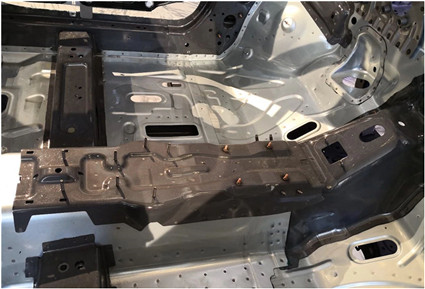 | 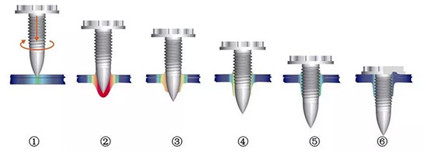 |
Tightening of FDS flow drill screws
The FDS flow drill screw tightening process is a cold forming process that uses a device to transmit the high-speed rotation of the motor to the plate to be connected through the central tightening shaft, causing frictional heat to generate plastic deformation and complete the self-tapping and screw connection. In the cold connection of aluminum car bodies, FDS and SPR are the absolute mainstays. SPR is mainly used in various parts of the car body. In contrast, FDS is primarily used in areas such as longitudinal beams, threshold beams, and rear longitudinal beams that only have single-sided space, and its sharp points are also hidden inside the car body structure without affecting its appearance.
Aluminum welding bolts
Aluminum welding bolts are a method of welding the end of an aluminum alloy bolt to the surface of an aluminum plate by electric arc welding and completing the welding by applying a certain pressure after the contact surface is melted. Compared with steel car bodies, there are more types of fasteners for all-aluminum car bodies, including pull rivet type, compression rivet type, edge folding type, lock rivet type, FDS, welding bolts, threaded sleeves, internally threaded sleeves, etc. In the car body design process, fasteners are mainly selected reasonably based on performance, function, cost, structure, etc., to achieve body connection through many fasteners and give it a genuine soul.
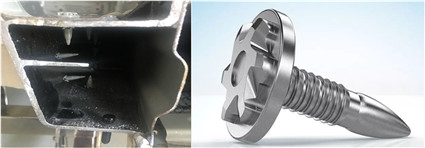 |  |
Previous: Why do Fastening Bolts Loosen?
Next: Features of knurled nuts
Contact Us
Tel.:
+86 020 8621 0320
+86 020 3121 6067
E-mail:
Technical Support:
Navigation
SEND INQUIREY